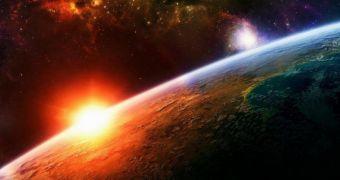According to NASA researchers, it is possible that our planet has already welcomed visitors from outside the solar system. The bad news is that these visitors are nothing like the two-legged greenish creatures Hollywood has taught us to expect.
On the contrary, they are teeny tiny specks of dust that scientists say were brought to Earth by a NASA spacecraft not too long ago. What's more, the dust grains believed to be visitors from outside the solar system form a crew of just seven.
In a paper published in the journal Science this past August 15, scientists detail that the Stardust mission launched back in 1999. The spacecraft returned to Earth in 2006, and researchers have since been busy studying the dust it gathered while in space.
Of the specks of dust that have until now been pulled from the spacecraft's collectors, seven appear to originate from interstellar space. Besides, scientists have reasons to believe that they formed in a cosmic explosion millions of years ago.
“The seven particles probably came from outside our solar system, perhaps created in a supernova explosion millions of years ago and altered by exposure to the extreme space environment,” NASA writes in a press release concerning the discovery of these specks of dust.
It's important to note that further investigations must be carried out before scientists can say for sure that what they are dealing with are specks of interstellar dust. Should their suspicions be confirmed, the particles will help researchers reach a better understanding of the evolution of the universe.
“Scientists caution that additional tests must be done before they can say definitively that these are pieces of debris from interstellar space. But if they are, the particles could help explain the origin and evolution of interstellar dust,” NASA writes on its website.
The researchers, who are now busy studying these specks of dust, say that, in terms of composition and appearance, the particles are surprisingly different to one another. Thus, the biggest of the bunch are said to be quite similar to snowflakes in terms of structure.
Of the seven particles, two, which also happen to the largest, appear to contain traces of a material dubbed olivine, i.e. magnesium-iron-silicate, which indicates that they might originate from dust disks surrounding stars. Other particles were found to contain sulfur compounds.
Further investigations are to be carried out, and scientists with NASA expect it will not be too long before they can say for sure whether or not these dust particles come from outside the solar system. Keep an eye on this page for future news on this research project and its findings.

 14 DAY TRIAL //
14 DAY TRIAL //